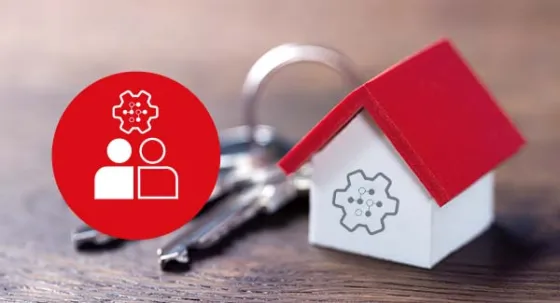How SAP Housekeeping works: More performance, lower costs

Markus Schütz
Senior Lead Architect SAP
This blog post is aimed at anyone who is confronted with the performance and stability of their SAP systems on a daily basis. We will show you how you can use targeted housekeeping measures to identify potential risks early on, avoid errors and sustainably optimise the performance of your systems - far more than just a superficial spring clean.
In practice, we often see that although SAP Business Suite and SAP S/4HANA systems appear to function smoothly, undetected problems lie dormant beneath the surface. These "ticking time bombs" can sooner or later manifest themselves in performance losses, instability or even system failures if no preventative housekeeping measures are taken.
Working through the often complex SAP notes with their numerous cross-references and technical details is very time-consuming. Collecting, reading, understanding and then correctly implementing the recommendations requires in-depth specialist knowledge. Only those who really understand these notes and recommendations can operate their system securely in the long term, maintain it efficiently and proactively minimise sources of error.
SAP housekeeping right from the start: The opportunity in migration and conversion
An essential aspect of housekeeping is not only the cleansing of existing data, but also the avoidance of unnecessary data accumulation right from the start.
Optimised processes and configurations can be used to stem the flood of data right from the start, thereby improving performance in the long term.
Housekeeping is a key success factor, especially in the context of IT projects such as SAP data migrations, OS/DB migrations or SAP S/4HANA conversions. By reducing the data volume, hardware requirements are reduced, downtime during migration is significantly shortened and potential migration problems, for example due to oversized tables, are avoided.
SAP Housekeeping is a comprehensive approach to optimising SAP systems that goes beyond Data Volume Management (DVM). In addition to cleaning up technical tables, SAP Housekeeping also includes the optimisation of work processes, the adjustment of parameters and the cleaning up of customising settings. The aim is to improve the overall performance of the SAP system, increase data quality, ensure system stability and reduce costs. DVM is an important component of SAP Housekeeping and supports the identification and management of large amounts of data.
Housekeeping and data archiving: not a contradiction, but a perfect complement
SAP Housekeeping can be used both independently of data archiving and as a valuable addition to it. We often hear the argument: "I can't delete any data because of legal retention obligations, otherwise I'll be in trouble at the next SAP audit." This misunderstanding means that valuable optimisation potential remains untapped.
Of course, the retention obligations must be complied with. Nevertheless, there are a number of ways to clean up the system in accordance with the rules and remove unnecessary data ballast. Numerous SAP Notes provide detailed instructions on which data can be deleted or archived in accordance with compliance requirements. One specific example is SAP Note 2388483, which describes data management for hundreds of technical tables and therefore forms a valuable basis for targeted housekeeping measures.
Followed by three examples:
- The DBTABLOG table often contains many millions of unnecessary entries, such as KONP. According to an SAP note, these may be deleted from the DBTABLOG and the logging of KONP may be switched off in order to avoid new log entries. Like KONP, there are many other tables delivered incorrectly by SAP with regard to logging.
- The application log (SLG1 - table BALDAT) contains many unnecessary entries that can be deleted when using SAP Fiori. You can also prevent new entries from being written.
- ARFC, TRFC, QRFC tables: These tables are not extremely large, but they are read and changed very frequently. They should be freed from old entries for performance reasons.
Deleting or archiving: The right strategy for your data
The following basic rule applies here: application data must not be deleted, but archived as long as the retention period has not expired. Data from technical tables should not be archived, but their content should be deleted by object, not by date. Both after deletion and archiving, it is highly recommended (depending on the database) to reorganise the respective tables for defragmentation to optimise performance. The DB-specific properties must be taken into account. The SAP HANA database, for example, reorganises all data automatically, but not the LOB segments. These must be reorganised separately, but this is very quick and easy.
Targets and areas of SAP housekeeping
SAP housekeeping is a valuable investment in the future of your SAP system landscape. It is not just a short-term clean-up, but a strategic measure for the sustainable optimisation of performance, stability and security. Housekeeping is particularly suitable as a preparatory measure for the following IT projects:
- SAP S/4HANA Conversion: Reduces the migration effort and minimises downtime.
- DB migration from anyDB to SAP HANA: Reduces the database size and thus the costs for hardware and migration.
- Unicode conversion: Optimises system performance and reduces storage requirements.
- Migration to a private cloud: Reduces the cost of cloud resources and improves performance.
- Interfaces: Optimises RFC performance and identifies unused SM59 destinations.
The most important housekeeping areas at a glance:
In addition to cleaning up large tables, SAP Housekeeping covers a number of other important areas:
- Highly growing base tables:
- Identification of base tables with critical growth.
- Consideration of boundary conditions such as customising, compliance requirements and retention obligations.
- Optimal implementation of SAP recommendations through targeted housekeeping jobs.
- SAP users and authorisations.
- Identification of particularly large SAP roles.
- Deactivation of users who have not logged on for a long time (inactive users).
- SAP configuration:
- Clean-up of obsolete SAP parameters.
- Detailed analysis and optimisation of SAP memory management to avoid overload or underload.
- Database configuration (DB):
- Clean-up of obsolete DB parameters.
- Performing DB parameter and mini-checks (especially for SAP HANA databases).
- Checking and optimising DB compression.
- Platforms (operating system and virtualisation):
- Checking the configuration of virtual machines (VMware, Azure, AWS, LPAR).
- Check the operating system configuration (swap space, users, CPU, RAM).
- Administration and operation:
- Check and update the SAP kernel (often neglected during updates).
- Clean old files due to changed directory structures.
- Optimisation of start/instance profiles.
- Use of current start/stop tools (sapcontrol, sapstartsrv).
- Check the versions of SAP Diagnostic Agent and SAP Host Agent (saposcol).
- Identification and renewal of expired certificates.
The many benefits of SAP Housekeeping
SAP Housekeeping offers a wide range of benefits that have a positive impact on your IT infrastructure and business operations:
1. Significant hardware savings:
- Lower hardware resource requirements (RAM, hard drives, CPU) for your SAP HANA database or SAP S/4HANA systems.
- This results in significant cost savings when purchasing new hardware or running costs in private cloud environments.
2. Minimisation of downtimes:
- Shorter downtimes for OS/DB migrations (e.g. from anyDB to SAP HANA) or Unicode conversions.
- Significantly reduced downtime for S/4HANA conversions.
- Shorter downtimes when migrating your SAP systems to a private cloud.
- Significantly reduced times for backups and, in particular, for restore/recovery in the event of a system failure.
- Reduction in costs resulting from production downtimes.
3. Sustainable performance optimisation:
- Improved response times in relevant areas thanks to smaller tables, less complex SQL queries and optimised system parameters.
- Additional performance increase by avoiding unnecessary data accumulation.
4. Optimisation of daily IT operations:
- Improved clarity and reduced complexity through the removal of obsolete parameters, files, roles, etc.
- Easier troubleshooting through fewer error messages and a clearer system landscape.
- Accelerated troubleshooting through tidied-up log and trace files.
Concrete successes: housekeeping in practice
To illustrate the positive effects of SAP housekeeping, we would like to present two concrete examples from our practice:
Example 1: OS/DB migration from anyDB to SAP HANA
The following effect was seen during an OS/DB migration from any database system (anyDB) to SAP HANA:
- The database size before the clean-up was 2 TB.
- Through targeted housekeeping measures based on relevant SAP instructions, we were able to reduce the storage requirements of four large SAP base tables from approx. 700 GB to 200 GB.
- This reduced the total size of the database before the migration to 1.5 TB.
- As hardware for four new SAP HANA servers (development, quality assurance, sandbox, production) had to be procured, this resulted in considerable cost savings: instead of 8 TB (4 servers x 2 TB), we only needed 6 TB (4 servers x 1.5 TB) of RAM and hard drive storage. This reduction is particularly noticeable in private cloud environments, where RAM and fast hard drives are expensive.
- In addition, the downtime during the migration to the SAP HANA database was reduced by around 4 hours (from 16 to 12 hours), which significantly minimised the impact on business operations.
Example 2: SAP S/4HANA conversion
We were also able to achieve significant improvements in an SAP S/4HANA conversion through housekeeping:
- The original database size was 2.1 TB.
- A single large SAP base table occupied approximately 720 GB plus an index of 130 GB. By applying SAP instructions, we were able to reduce these values to 250 GB and 50 GB respectively.
- The planned SUM/DMO migration was initially not possible due to the size of this table and despite all attempts to optimise the database export.
- We were finally able to solve the problem through intensive housekeeping over several weeks, during which data from the SOFFCONT1 table was moved to the SAP Content Server (as direct deletion was not possible due to compliance requirements).
- The database size before the migration was only 1.55 TB after housekeeping.
- The downtime during the SAP S/4HANA conversion was reduced by around 5 hours (from 16 to 11 hours).
Invest in the sustainable health and performance of your SAP system
The benefits of SAP Housekeeping are convincing: lower costs thanks to optimised resources, improved performance for smooth business processes, minimised downtimes for maximum availability and an overall more stable and secure IT operation. SAP Housekeeping is therefore far more than just a one-off clean-up operation - it is a strategic investment in the future of your company.
We view SAP Housekeeping as a continuous process of optimisation and further development. This is the only way to ensure that your system can cope with increasing requirements in the long term and perform optimally. We are happy to accompany you on this journey as an experienced partner. With our comprehensive SAP housekeeping services, we help you to realise the full potential of your SAP system landscape and ensure your long-term business success.
